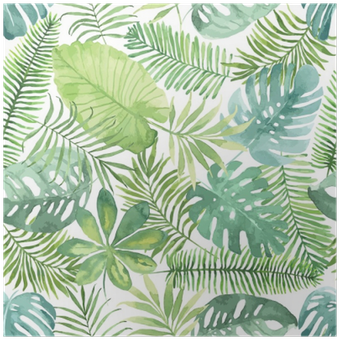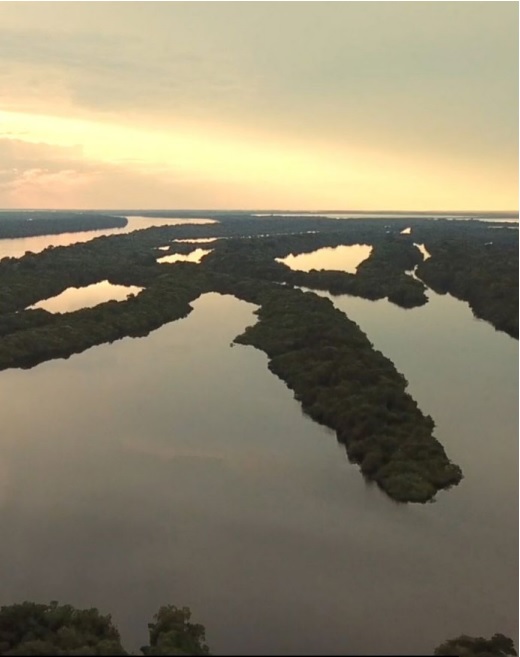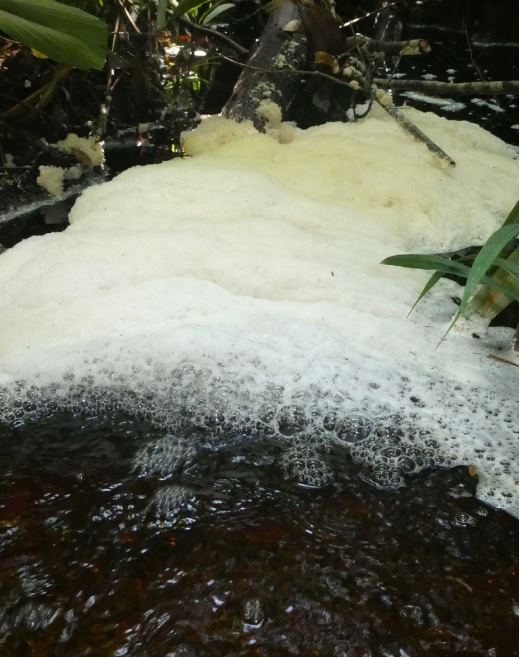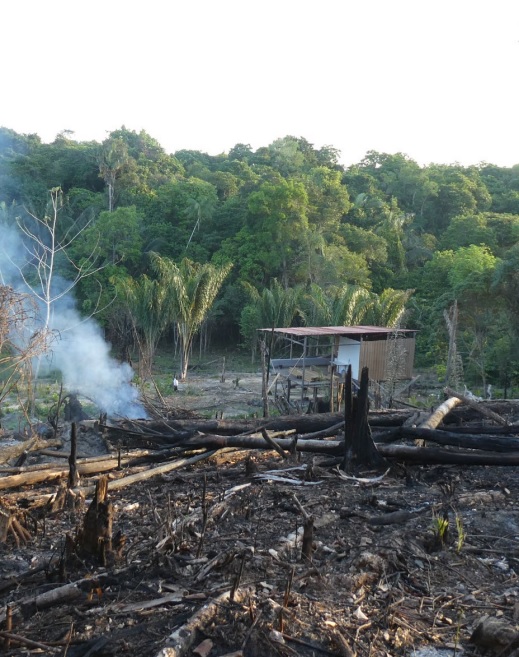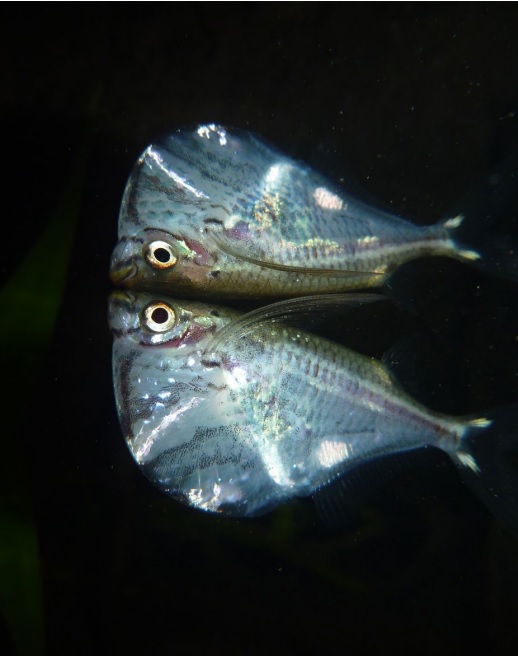 Português
Português English
English
Languages
The hidden life that sustains the forests of the Rio Negro.
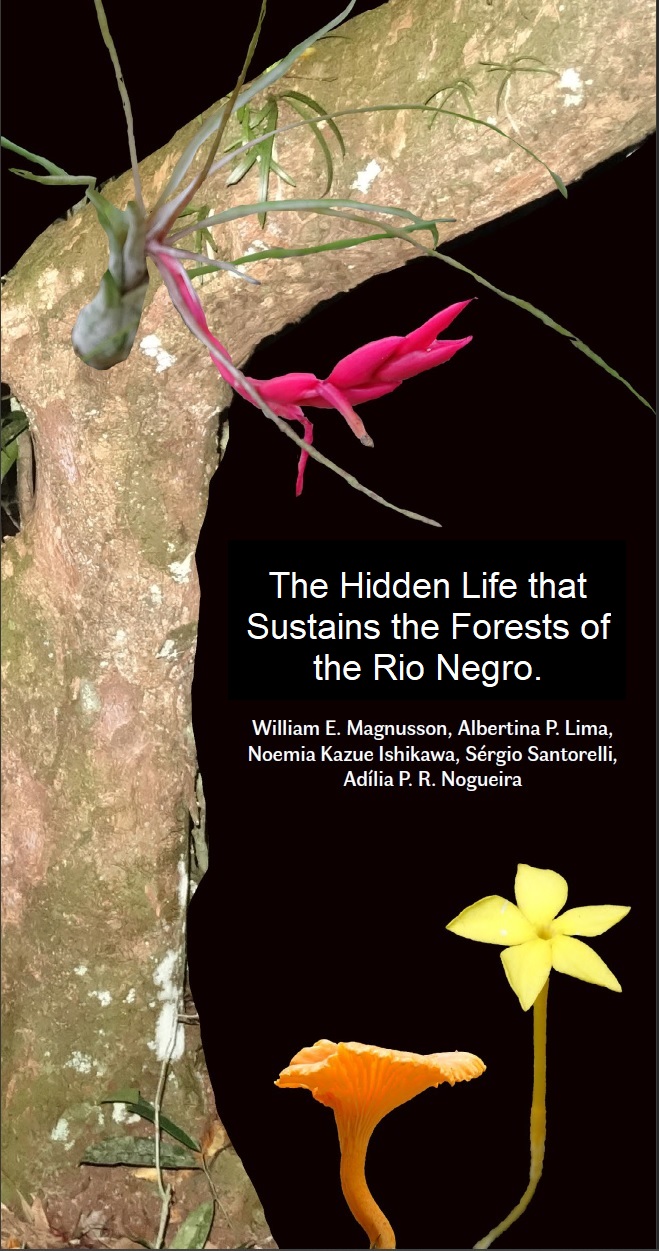 |
The objective of this book is to present to students, ecotourists and local residents who live near or visit the Rio Negro, a little information about the incredible relationships between living organisms, and the soil and water that sustain the forests in this region. |
|
|
We hope to shed some light on the mystery of how the Amazon rainforest thrives on soils with low levels of essential plant nutrients. This complex biological system is made possible by a multitude of processes, making it one of the most fascinating and intricate ecosystems in the world.
By taking a stroll through the forests in the Rio Negro region, specifically in the Rio Negro Sustainable Development Reserve (RDS-RN), you can get a glimpse of the complexity of this ecosystem. Despite the harsh conditions of the sandy, nutrient-poor soils, the forests in this area continue to flourish and astound. Join us as we explore this unique and captivating environment. |
|
|
There is a diversity of soils in the Rio Negro region, and although most of them have sand in their composition, some consist almost entirely of pure silica and cannot support plant life on their own. The origin of these soils is still not known, but they appear to be mostly sand dunes formed by winds during dry periods. This booklet will mainly focus on the strategies used by plants to colonize and stabilize these dunes, but first, we will examine the relationship between soils and water, which is essential for both plant life and the people living in the region. |
||
|
Figure 1. Many white sand soils in the Rio Negro region consist of almost pure silica, as can be seen in this nest of ants.
|
||
|
The soil and the water We will begin our journey by a stream, as roads and homes are typically located nearby, and many visitors enjoy visiting swimming areas. While this is not ideal for either the forest or the local people, it is the current reality in the region. One of the first things a visitor may notice is that the water appears dark, like the colour of a cup of black tea. Those who are familiar with streams from regions with clay soil and clearer, more transparent waters might assume that the water in the igarapé is dirty and not suitable for swimming, but this is not the case. |
||
|
Figure 2. Organic acids in black water streams have a dark reddish colour, but the water is clean. |
||
| The dark colour of the water is due to the leaves of the forest. As trees shed their leaves and they begin to decompose, the remaining nutrients in the leaves and other substances, such as humic acids, are released. These acids, produced by all decaying vegetation, mix with minerals in the soil, leading to soft, crumbly soils that are beneficial for plant roots. This is why decomposed organic matter is often used as fertilizer in agriculture. | ||
|
Figure 3. The islands of the Anavilhanas Archipelago were formed by the action of the black water of the Rio Negro on the sediments of the Rio Branco
|
||
|
The impact of humic acids on minerals can be observed at the confluence of the Rio Negro and the Rio Branco. The waters of the Rio Branco are high in suspended sediments, giving it a whitish color. When these waters mix with the dark, humic acid-rich waters of the Rio Negro, the suspended particles come together to form flakes and, due to their density, settle at the bottom to form the Anavilhanas archipelago, the second largest river archipelago in the world. The largest archipelago, Mariuá, is further upstream in the Rio Negro. |
||
| The Rio Negro is considered the largest blackwater river in the world and most of the forested areas draining into it have sandy soils similar to those in the RDS-RN. These soils consist mainly of coarse granules of silica (silicon dioxide [SiO2]) and do not react easily with plant nutrients and humic acids, leading to their accumulation in black water streams and rivers. | ||
| Contrary to popular belief, black water can be safe for bathing under proper environmental conditions. Many pathogenic microorganisms that cause diseases are adapted to the acidity of human blood, which is less acidic than Amazonian black water. | ||
| In some smaller streams, a white foam similar to that seen in heavily polluted rivers, like parts of the Tietê River in São Paulo, may be present. However, in black water, this foam is actually a sign of good conditions. Those who have been to regions with alkaline water, such as the Bonito region in the Pantanal, may have noticed difficulty in lathering soap and a sticky feeling on the skin after bathing due to the difficulty of fat dissolving in alkaline water. In contrast, black water quickly cleanses the skin of grease, and the oils from forest leaves create foam on the water's surface. | ||
| Unfortunately, people are destroying the stream banks though deforestation and installing toilets in the shallow areas. While one person may not cause significant harm, the combined actions of many people can have a negative impact on the environment, as seen in the old resorts of Manaus. | ||
|
Figure 4. White foam forms in black water streams, but the water is clean and the foam does not indicate pollution.
|
||
| People once bought land near streams and established spas, taking advantage of the clean water from the forest. However, as more and more people upstream cleared the land, the water quality decreased and caused illness among bathers, causing them to abandon these sites. This degradation process repeated itself until most spas became open sewers. Today, residents of Manaus have to travel for hours to visit spas in acceptable conditions, whereas in the past, these spas were in close proximity to their homes. Unfortunately, the same decline is happening in many other creeks, including those in the RDS-RN region. | ||
|
Figure 5. Forest clearing and building of houses near
streams threatens biodiversity and people.
|
||
| Many of the animals and plants associated with the black waters of the Rio Negro basin depend on clean water and cannot survive without the purifying action of the forest. They do not occur in any other part of the world, meaning that the degradation of streams threatens many lives not just those of bathers. | ||
|
Too much water and too little water In the same way that sand does not retain nutrients, it also does not retain water, leading to the lack of water for many plants to survive. |
||
|
Figure 6. Many of the animals in the streams cannot survive after the surrounding forest is cleared.
|
||
| Studying forest trees is a challenging task due to their large size and complex interconnected network, which will be discussed in more detail later. However, studies with pea plants (Pisum sativum) have revealed that plants have multiple senses, one of which is hearing or the ability to detect vibrations. Pea plants can make relatively complex decisions based on the "sounds" they "hear". For example, the sound of running water typically indicates that the soil is too wet, and when the soil is wet, pea plants do not respond to the sound of running water. Conversely, during times of water shortage, when the soil does not contain enough water to support normal plant growth, pea plants direct their roots towards the sound of the water flow. | ||
|
Figure 7. The "palha vermelha" stemless palm, captures falling leaves and directs its roots upward to intercept nutrients.
|
||
| Similarly, many plants are also known to produce more nectar when they sense the sound of their pollinators. Plants can probably respond to sounds in many other situations, but to date no one has dared to investigate how these organisms use "hearing" in the rainforest. The destruction of environments around streams will certainly affect the way plants perceive their environment, causing negative impacts on a much larger scale than can be imagined. Further investigation is needed to understand the relationship between plants and sound in the rainforest. | ||
|
The forest and the soil
Let's return to the original question. How is the Rio Negro RDS forest so abundant in species of plants, animals, and microorganisms despite having soil that is poor in nutrients and losing the nutrients from vegetation quickly to streams and rivers? Let's begin answering this question by exploring examples of some plant behaviours, but we'll also see that they can't act solely.
|
||
|
We have seen that sandy soils have few nutrients to sustain plants, and those that are available are quickly lost due to rainfall. The first strategy that plants use is to capture nutrients before they reach the mineral soil. This strategy is more easily seen in large stemless palms. We are used to seeing the tops of palm trees swaying gracefully on top of the trunks of the açaí and peach palms, but within the forest we find the tops of palm trees as large or even larger rising directly from the forest floor, such as that of the red straw palm.
|
||
|
As with the tops of palm trees with trunks, the tops of palm trees without stems need to capture light to carry out photosynthesis and generate energy for the plant to grow, but the leaves of palm trees without stems have one more use: they work. like a funnel to direct falling tree leaves to the base of the palm tree. Thus, they get the material they need, but these palms need one more trick to prevent these nutrients from escaping through the sand and being lost.
|
||
|
The roots of most plants grow downward toward the ground, a phenomenon called positive geotropism. This makes sense in most situations, as the nutrients needed for growth are in the soil below the plant. |
||
|
Figure 8. Some plants send their roots upwards, a phenomenon known as negative geotropism.
|
||
| Stemless palms however, capture decaying leaves above the ground and therefore have to send their roots upwards for nutrients. If we dig through the accumulated material between the leaves of palm trees, we find roots growing upwards, this is negative geotropism. It's a strange situation, where both the leaves and the roots grow upwards towards the atmosphere. This phenomenon is more easily observed in stemless palms, but other plant species in the RDS-RN forests also use this strategy. | ||
|
Figure 9. Some campinarana areas have surface water, do not accumulate leaves on the ground and look like the lowlands.
|
||
| There is a type of forest called "campinarana", which is very common in the Rio Negro region and occurs mainly on higher ground. Some campinarana resemble the lowlands, as they do not have many leaves on the ground and are often dominated by a species of palm called burutirana (Mauritiella aculeata). These can be confused with lowland buritis (Mauritia flexuosa), but in general their stems are thinner and their leaves have long fibers at the ends. In these places, water tends not to penetrate the soil very far because of a thin layer of organic material called silt. As the nutrients cannot go further down, they are available to the roots that are on the surface. | ||

Figure 10. People walking along this trail have created grooves in the ground, showing that the “soil” is made up of roots and organic material.
|
||
| The situation is different on elevated ground, where water flows downwards and carries nutrients away from tree roots. In these areas, trails used by people seem to be dug into the ground and are surrounded by walls that are a foot or more high. Upon closer inspection, however, the "soil" on the trail walls is found to be soft and spongier, lacking grains of sand or clay. It becomes evident that not just the roots of palm trees, but the roots of all trees in the forest, grow above the mineral soil. In the elevated areas of the campinaranas, the soil is created by the forest and is comprised almost entirely of roots and decomposing leaves. The forest created its own soil where the existing soil was not sufficient. If a fallen tree were to be encountered, it would be observed that most of its roots had grown parallel to the surface of the soil and only a few had grown parallel to the surface of the soil and few had penetrated into the sandy soil. | ||
|
Forest Cleaner Fungi The situation of trees growing their roots upwards in competition for nutrients is further complicated by the presence of fungi in the forest. If someone were to ask, "What is the biggest creature in the forest?" one might not immediately think of a fungus. We often only see the mushroom, which can be edible or toxic, but the majority of a fungus is made up of tiny threads called mycelium. In the rainforest, there are so many fungi mixed together that it is difficult to distinguish one from another, but in a simpler forest system in the Blue Mountains of the USA, researchers were able to map the mycelium of a single fungus. It covered an area of nearly 100 hectares and is considered the largest known organism to date, with an estimated age of over 2,000 years. It is likely that some fungal individuals in the rainforest are even larger. |
||
|
Fungi play a crucial role in the functioning of the forest. Despite what many believe, they are not plants, but their size and importance make them an integral part of the ecosystem. |
||

Figure 11. The mushrooms we saw are a small part of fungi, which consist mainly of hidden threads.
|
||
| In fact, fungi are biologically more like animals than plants. Some fungi are predators, while others are herbivores or pathogens. However, it is the decomposer fungi that make it possible for us to walk through the forest. The leaves and twigs that fall from the canopy have few nutrients for most organisms. Termites have bacteria in their intestines that can digest lignin, the hardest part of wood, but their actions are slow, and they would not be able to prevent the accumulation of trunks and branches in a layer several meters high, which would obstruct our passage. Only certain types of fungi are capable of rapidly breaking down wood, making it soft enough for insects to consume. | ||

Figure 12. Decomposer fungi clean the forest floor,
releasing nutrients for plants and allowing us to pass by.
|
||
| These fungi often have fruiting bodies that resemble plates protruding from the trunk. At times, we pause to admire those with striking red colour or designs. On certain rainy days, what appears to be smoke may be seen coming out of the "plates," but in reality, they are microscopic spores used by fungi for reproduction and dispersal. This is the main function of mushrooms and other fungal fruiting bodies. The majority of the fungus' body is made up of delicate mycelial threads within the trunk, breaking down and decomposing it, allowing us to traverse the forest. Without fungi, fire would be the only means of cleaning up the build-up of branches, which would be devastating for both the forest and its inhabitants. | ||
|
Plant and Fungal Cooperation Plants are known for their thick roots that provide structural support, but they rely on delicate root hairs to absorb nutrients. Expanding their roots to support these hairs over a large area would be too costly for the plant, even with the energy generated through photosynthesis in its leaves. Fungal mycelia, on the other hand, can rapidly spread through soil, but they lack a sufficient energy source. |
||
| The solution is for plants and fungi to form a symbiotic relationship, known as a mycorrhiza. In this partnership, plants provide energy to fungi in the form of sugars and other photosynthetic products, while the fungi use their mycelia to search for nutrients such as phosphorus and potassium that the plant needs. The relationship is so intimate that it's hard to distinguish between the plant and the fungus as separate organisms. In many cases, both the plant and the fungus are mutually dependent and could not survive without each other. | ||
| In reality, mycorrhizal fungi form much more complex and interdependent systems with plants, because the same fungus can form associations with several trees at the same time. | ||

Figure 13. The giant macucu probably manages to grow where other trees struggle due to its partnerships with fungi.
|
||
| In Europe, researchers were puzzled by the discovery of circular rings in the ground made of a material similar to the outer bark of a tree. The centre of these rings was filled with dead and rotted wood. The mystery was how the wood in the bark could have remained alive without the leaves, as the trees had been cut down hundreds of years earlier. Eventually, the researchers uncovered the answer. The dead trees were still connected to other trees in the forest through mycorrhizal fungi. The live trees were supporting their former neighbours, which could no longer produce energy through photosynthesis! | ||

Figure 14. The fungus Cantharellus sp. lives in partnership with the trees. It receives energy from the tree in exchange for nutrients.
|
||
| Interconnections in tropical forests are likely even more intricate due to a higher number of tree and fungal species. However, there is a shortage of researchers studying these relationships in some of the world's most biodiverse areas, such as the Amazon. | ||
| In regions like North America, Europe, and Japan, certain mycorrhizal fungi are well-known and prized, such as truffles, chanterelles, porcini, and matsutake. Experienced mushroom hunters know exactly where to find them as they only grow in partnership with specific tree species. In the RDS-RN area, a species of fungus called Cantharellus sp., similar to the European chanterelles, is found in the campinarana near an Aldina heterophylla tree, commonly known as campineira or macucu. | ||

Figure 15. The fungi usually associated with macucus look like European chanterelles and are just as tasty.
|
||
| These make a delicious dish for those who enjoy fine mushrooms | ||
| Profiteers | ||
| However, the soil is not just a peaceful environment with all species coexisting in harmony. Just like in human societies, there are always opportunists looking to benefit from others' efforts without giving back. In the same way, some fungi in the soil are not mycorrhizal and help plants, but instead, they are pathogens and try to invade the plant to cause harm. | ||

Figure 16. These leafless plants are sometimes called saprophytes, but they are parasites of mycorrhizae and their associated plants.
|
||
| To combat this, plants and fungi have developed complex means of communication to distinguish between friend and foe. This communication can occur through electrical impulses, similar to our nervous system, but on a much smaller scale, or through the release of odours or chemical substances in water. These signals serve as a kind of password, ensuring that only the right entities are allowed access. | ||
| On the other hand, there are also "harvesting plants" that deceive the fungi. In RDS-RN, it is common to find small yellow flowers growing from the forest floor. Upon digging a little, one can find roots in the soil, but what is curious is that these plants don't have leaves and don't produce energy. They trick the fungi into providing them with energy produced by other plants, but give nothing in return. | ||
| Running away from the ground | ||
| Little light reaches the level of the forest floor. In order to find light and escape soil-dwellers, various organisms that carry out photosynthesis live on top of other plants, and these plants are called epiphytes. In reality, some of these aren't exactly plants. Some are small protists, which normally only have one cell, have chlorophyll and therefore can carry out photosynthesis, which are called algae. When a lake has a lot of nutrients and the water turns green, it's because of the algae. Algae do very well in water and are responsible for most primary production in the oceans, but their tiny size and fragility put them at a disadvantage compared to plants on land. | ||

Figure 17. Lichens are composed of fungi, bacteria, algae and yeasts, and are usually thin and supported on the trunks and leaves of plants.
|
||
| To overcome the disadvantage of being small and fragile, some algae formed partnerships with fungi, bacteria, and yeast. These associations are called lichens, and they can be seen in the form of variously coloured spots on plant leaves and trunks of trees. Fungi provide the structural support, while algae produce energy through photosynthesis. The role of bacteria and yeast is still not fully understood. The most common lichens are green or light blue, but some are orange or dark red. They act like leaves, flat and spread out, but without branches or twigs, they rely on plants to be away from the low-light and hostile environment of the ground. A unique environment can be found in RDS-RN, where lichens grow directly from the ground, a subject we will delve into later. | ||
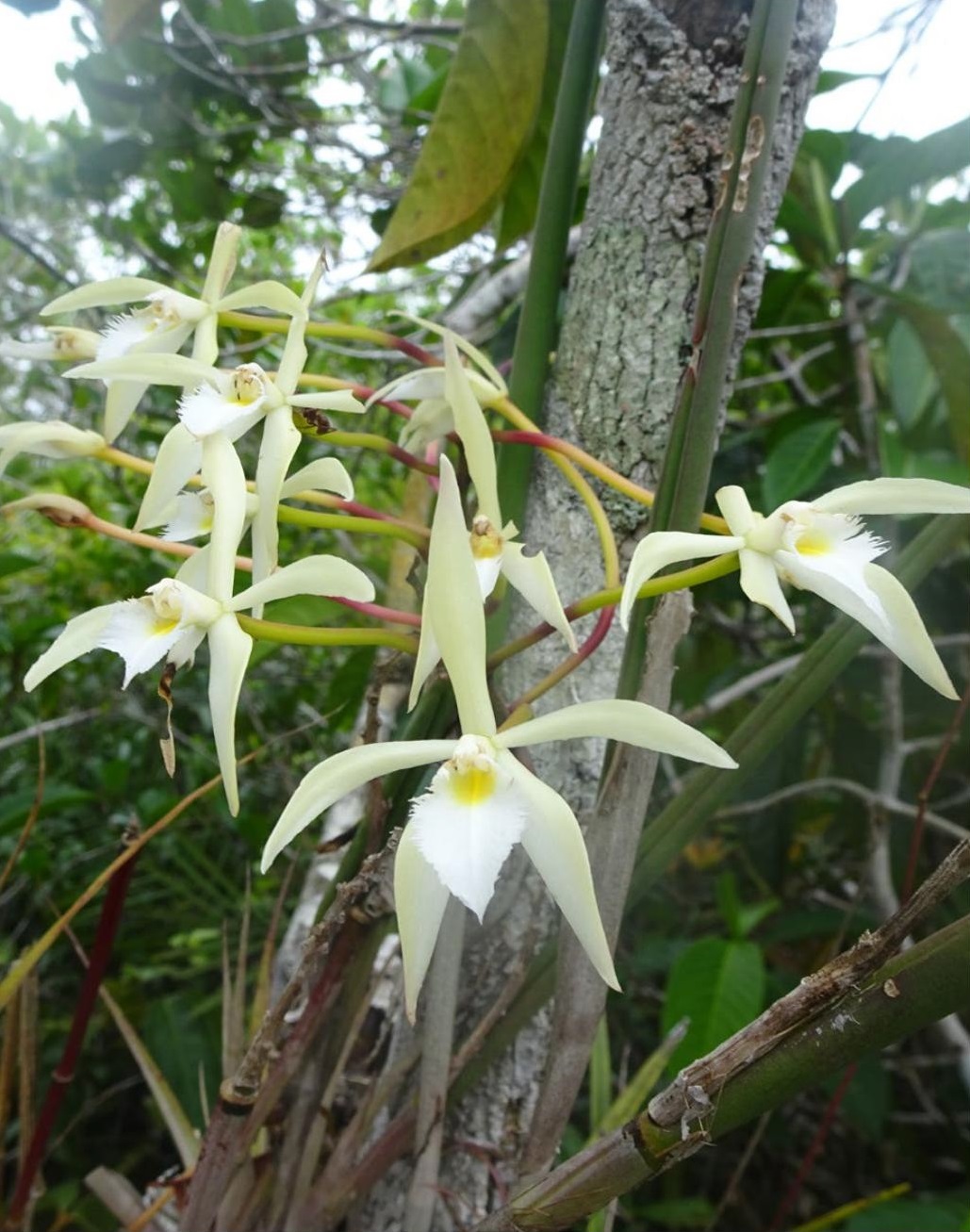
Figure 18. Orchids have tiny seeds and depend on an
association with fungi even to germinate.
|
||
| Some plants, like mosses, are not much more complex than algae and often rely on other plants for support. In the Rio Negro forests, the largest epiphytes are orchids, bromeliads, Monstera species, and members of the Cyclanthaceae family. These plants have both terrestrial and epiphytic varieties, with the latter growing on the branches of tree canopies where there is ample light and few harmful organisms. Living without soil is challenging for plants. Orchids have tiny seeds that can be carried by wind to the highest tree branches, but these seeds lack sufficient reserves to grow into seedlings. As a result, they can only germinate if they are colonized by a mycorrhizal fungus. | ||
| Lack of water is also a challenge for epiphytes. To conserve water, most of these plants use a photosynthesis process called Crassulacean acid metabolism (CAM). During the day, plants close their stomata, the small openings in their leaves used for breathing and capturing carbon dioxide. They can only open their stomata at night to avoid excessive water loss and complete the photosynthesis process. This process is less efficient than ordinary photosynthesis, so these plants generally grow slowly. | ||
| However, some epiphytes can survive on the forest floor. The poor soil nutrition in the Rio Negro region creates a unique environment where it's possible to find many epiphytic plants, even on the ground. There are areas called "campinas" (meadows) with pure sand patches where there is no root carpet covering the ground and most of the plants are low, rarely exceeding a person's height. The reason for these meadows is unknown, but it's believed that past fires, whether natural or caused by indigenous cultivation, destroyed the layer of roots supporting the tall forest. The plants that manage to colonize this type of environment are relatively small and slow-growing, with the exception of the macucu found in this area. | ||

Figure 19. Bromeliads use crassulacean acid metabolism to conserve water and only open their stomata at night.
|
||
|
Normally, you don't encounter many tree-living plants when walking in the forest. Although many of them fall from trees, they don't survive for long on the ground due to the lack of light or the actions of predators. If the theory that these areas used to be tall forests is correct, then the meadow is an area of regrowth (capoeira), but the forest regeneration process is much slower than in other areas. A forest on clayey soil would take a hundred years to recover its original complexity after being cut down and burned. However, it would take several hundred years or even millennia to recover the functionality of the forest on white sand.
|
||
| Regardless of its origin, these white sand forests offer a unique opportunity to appreciate the epiphytes without having to climb to the treetops. Among the meadow bushes, macucu trees can be found growing together with their mycorrhizae, showcasing that trees can also grow in this environment. | ||
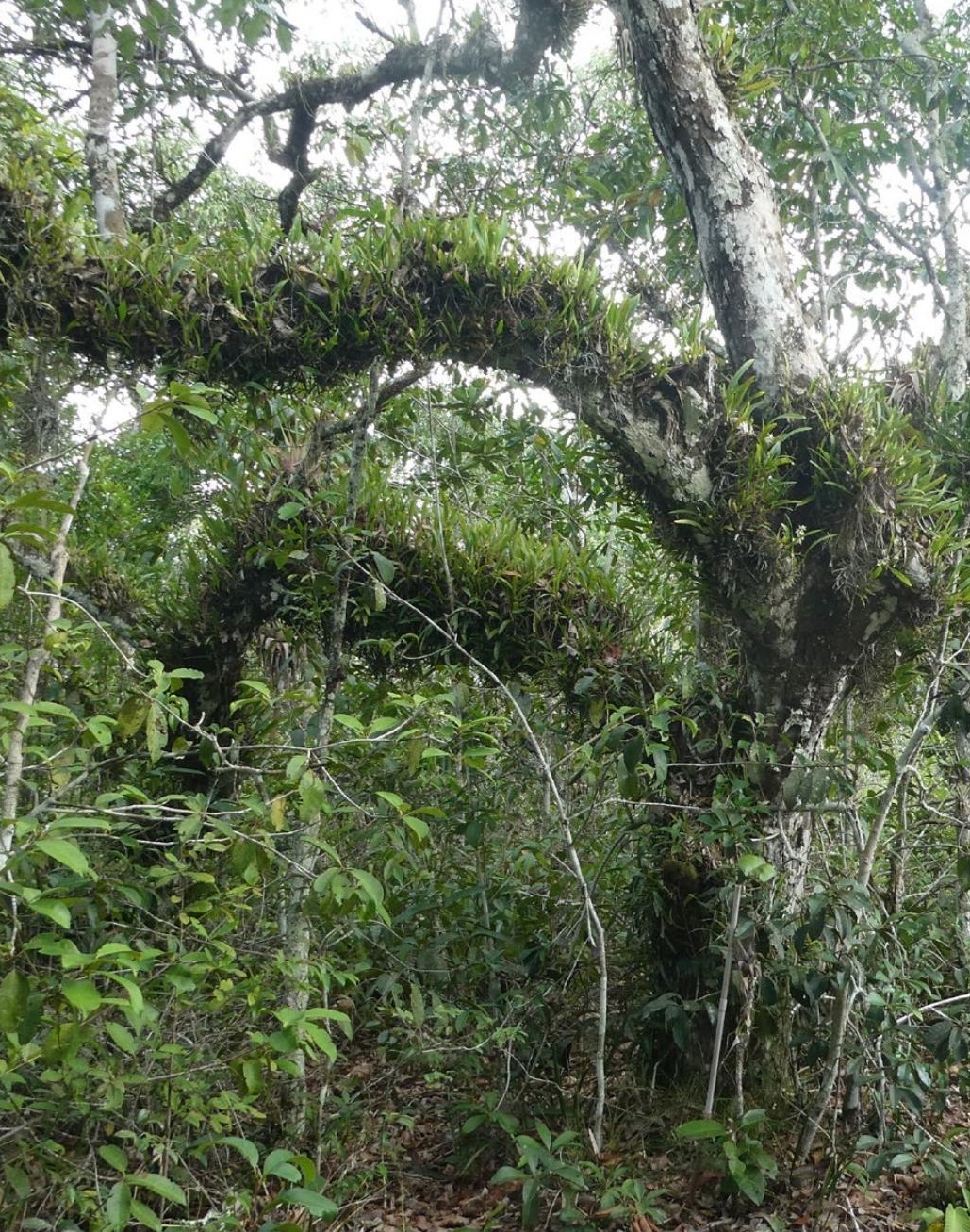
Figure 20. The campina macucus are covered by orchids and other epiphytic plants, such as bromeliads and ferns.
|
||
| Despite not needing a trunk to grow taller than other plants, macucus in the meadow produce crowns with horizontal branches that usually don't exceed the height of a person. These branches are covered with a profusion of orchids and bromeliads, creating an enchanting and fairy-tale like environment that is further accentuated by the morning or nighttime fog. | ||
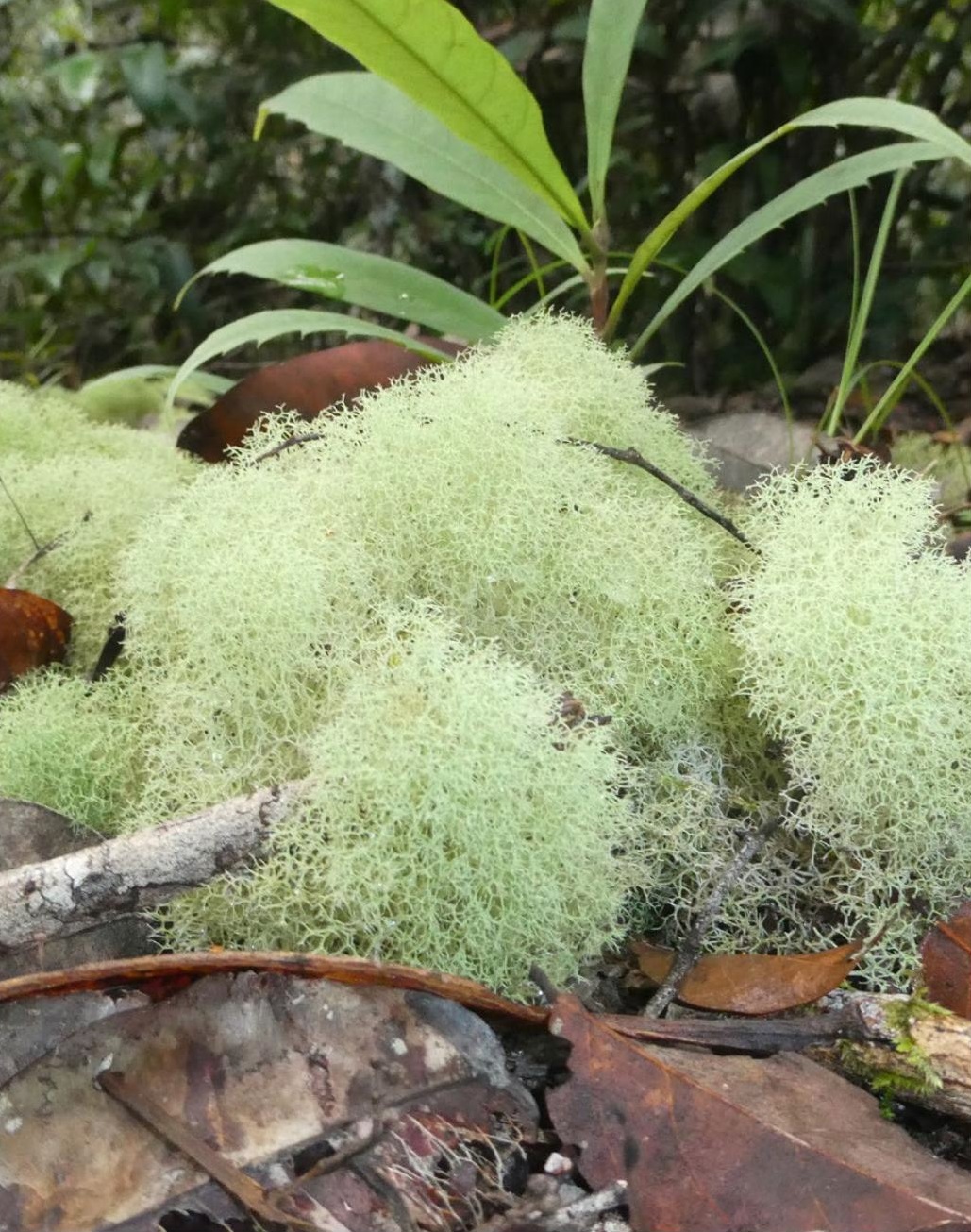
Figure 21. The lichen Cladonia sp. from the meadow does not depend on plants for support and looks like a sponge rising from the ground.
|
||
|
The unique conditions of the meadow also allow for the growth of a type of lichen that resembles sea corals. These tufts of green sponges are often stepped on by visitors, who are unaware of their special nature. If one encounters this type of lichen in the Amazon, it is a sign that they are in a meadow. |
||
| Unlike in the forest, where epiphytes that fall to the ground often do not survive, the bright light and nutrient-poor sand of the meadow provide a hospitable environment where these plants can thrive. The absence of the variety of soil organisms that cause diseases elsewhere allows epiphytes to flourish in the campina. | ||
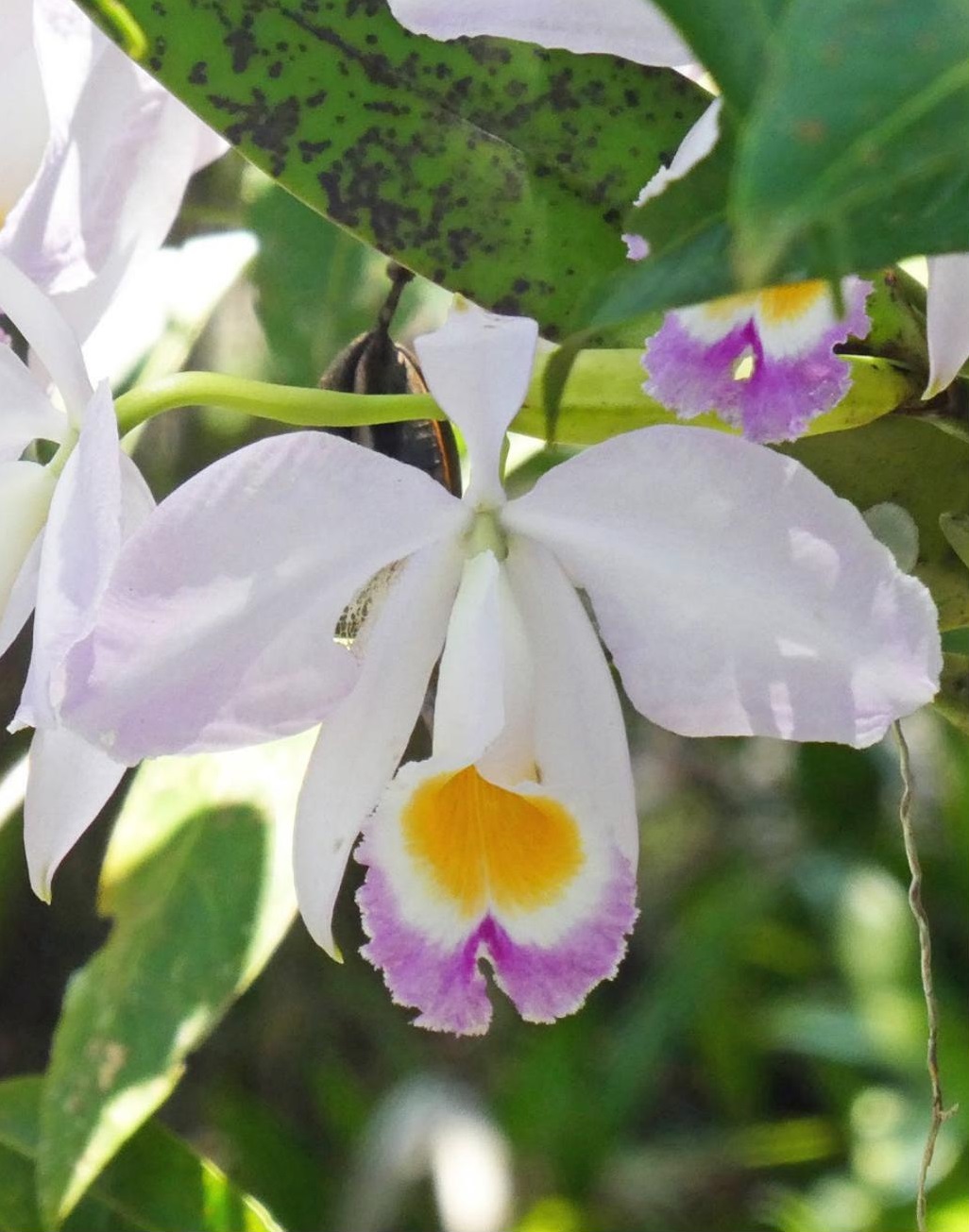
Figure 22. Orchids, such as Cattleya eldorado, are a great attraction for tourists, but the forest holds a much greater treasure.
|
||
| In fact, it's as if these plants don't even realize they're no longer on trees! The white sand meadows are a must-visit destination for photographers and plant enthusiasts alike, all thanks to the nutrient-poor soil that creates such a unique and thriving ecosystem. | ||
This was a very quick presentation about many complex concepts, but we hope it was enough for you to be able get an idea of how special the soils and forests of RDS-RN are, and why they have aroused the interest of ecotourists. However, the complex interactions we have mentioned also generate possibilities for other economic activities. There are many things that are traditional wisdom and have not yet been registered, but the potential for new knowledge and technologies is much greater than that.
To the CENBAM team, especially Andresa S. de Mello, Ilderlan Viana, and Emílio Higashikawa for their vital role in the logistics of field work. To Mrs. Alindomar and Jânio Lopes and their entire family for their hospitality. To Mr. Armando and Mrs. Lúcia Toga, who always welcomed us with much affection. To Mr. Ananias da Silva Nascimento who first took us to the campinas and campinaranas. To all the residents who always welcomed us, an indispensable partnership throughout all these years of work on the Uga-Uga branch.
Research in the region
Since 2015, researchers and postgraduate students from the National Institute of Amazon Research (INPA) who are part of the Biodiversity Research Program (PPBio) of the Ministry of Science, Technology, and Innovation (MCTI) have been studying the biological diversity of the western RDS, along with local residents who have vast traditional knowledge of the region. The studies in the region have been primarily funded by the Amazonas State Research Support Foundation (FAPEAM) through different projects.

